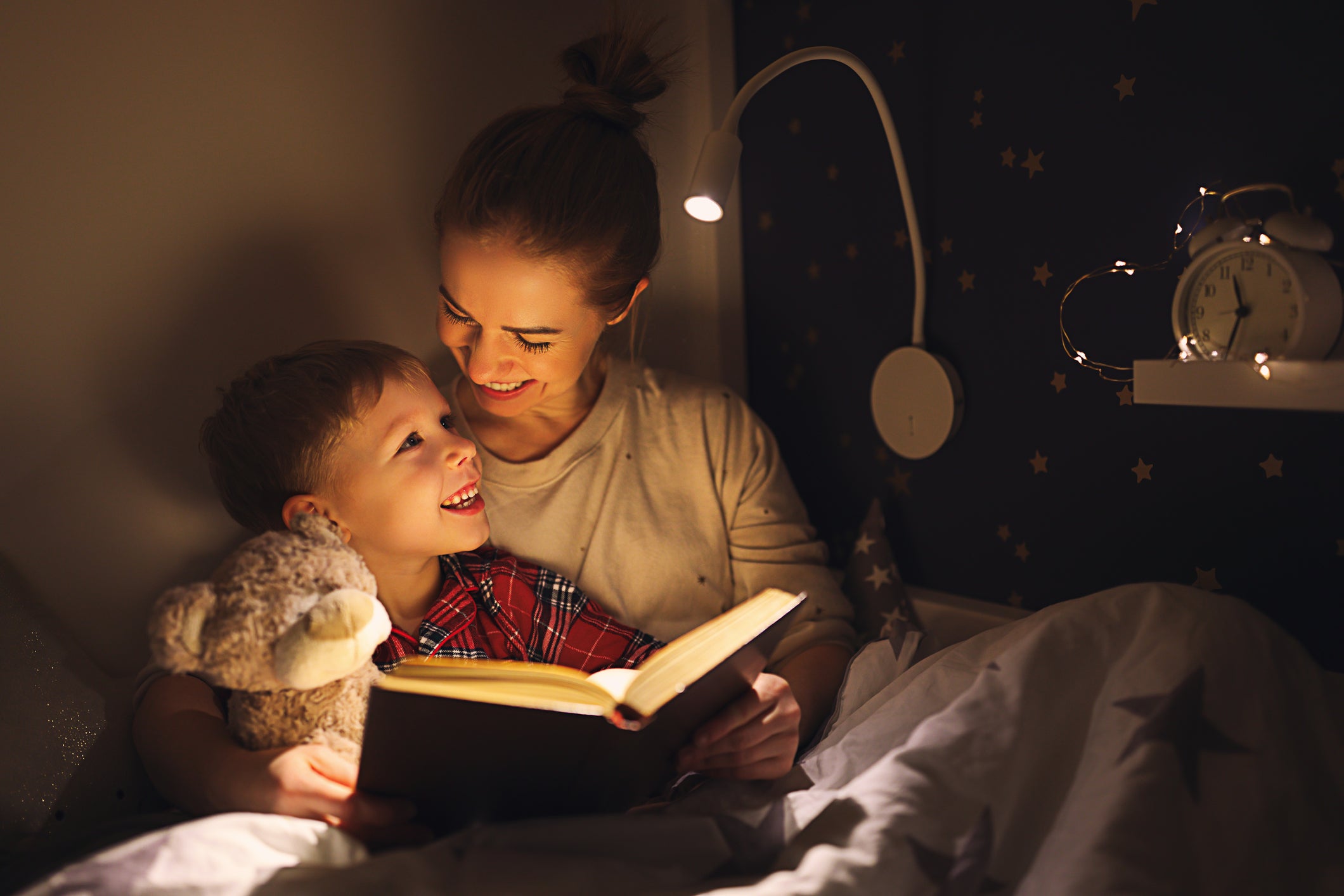Bedtime stories are one of the most important parts of the day
Stories give us a way to make sense of the mysteries of the world, make us better listeners, and help us express our deepest fears, writes Katy Brand


A few years ago, I asked my agent at the time if she could enquire about the possibility of me reading a bedtime story on CBeebies. My young son was of the age where he was starting to really watch it properly, and I thought I may be in with a chance to impress him.
My efforts at point had only resulted in a weary, “Mummy, I’m not laughing.” And so, the call went in, and we waited, and then finally the answer came back – a polite, professional, “No, thank you”, along with the slight implication that they were knee-deep in A-listers, and I would have to wait until the big names dried up and they had slipped the bookings process further down the celebrity alphabet. Quite a long way further down, as it turns out, as five years later I am still hovering by the phone.
It is yet one more show business rejection I will take on the chin, and I don’t mind it since we have the delights of Tom Hardy, Dolly Parton, Elton John and Bridgerton’s Rege-Jean Page to enjoy. I mean, for the children to enjoy.
And to be honest, I’m just happy that such a thing exists, and continues to exist, even as this government attempts to dismantle anything good and worthy and important from our culture. Because what is more important than storytelling? It is the way we humans make sense of the world, of the maddening mystery of life and the apparent cold chaos of the universe. It’s how we control our response to trauma, it’s how we share the legendary triumphs and ancient legacies of our kind, it’s how we learn to be good, or at least how to be bad in style.
I was lucky that I learned to read quite young and could dive into the countless books that were available to me at the local library. Lessons in empathy start early when you can see the world from the point of view of another, and then another, then another.
Stories make the listener a better person, of that, I am sure. And I don’t mean preachy stories, or ones with a clear-cut moral framework, because life isn’t like that. The more ambiguous the better – when I was little there was a series of audio tapes called The Storyteller which my father bought every week. Some of those stories were so amoral, so anarchic in places, that frankly, I remember being shocked even as a child that I was allowed to listen to them. But they made me think, and dream and challenged my assumptions.
When I read The Tiger Who Came To Tea by Judith Kerr to my son a while ago, he sat in silence at the end and then said, “Is the tiger good or bad?” “What do you think?” I replied. A long pause. (Or should that be paws?) And then he said with a far-off look, “I don’t know.” I was delighted. Really, deeply delighted. He was thinking about big questions now.
This renewed love of storytelling has come to me more powerfully in recent years. When I wrote a book about Mary Poppins in 2020, I researched the original author P L Travers extensively and discovered that she was an ardent student of the importance of fairytales, especially for children.
She wrote in an essay called The Fairy-tale as Teacher: “I have heard parents declare that they did not want their children to read fairy-tales for fear that they should grow up into wishful thinkers. (But) the fairy-tale can set up a chain of questions that will only take truth for an answer. One can hardly imagine a process less encouraging to wishful thinking!”
To keep up to speed with all the latest opinions and comment sign up to our free weekly Voices Dispatches newsletter by clicking here
As I said in the book, Travers firmly believed that there were deep truths to existence that could only be accessed through story and myth. Stories provide a safe framework through which we, and particularly children, can discuss our deepest fears.
Judith Kerr always maintained that despite her childhood running from the Nazis, the Tiger Who Came to Tea was simply a story about a tiger who came to tea. And of course, that is completely correct. And yet we all, even my young son, sense some ambiguity about that tiger, about what he does when he’s in their house, about how he simply vanishes again, and that leads to a conversation about good and bad.
I may never get that call from CBeebies, but that’s OK, just so long as the stories keep getting told.






Join our commenting forum
Join thought-provoking conversations, follow other Independent readers and see their replies
Comments